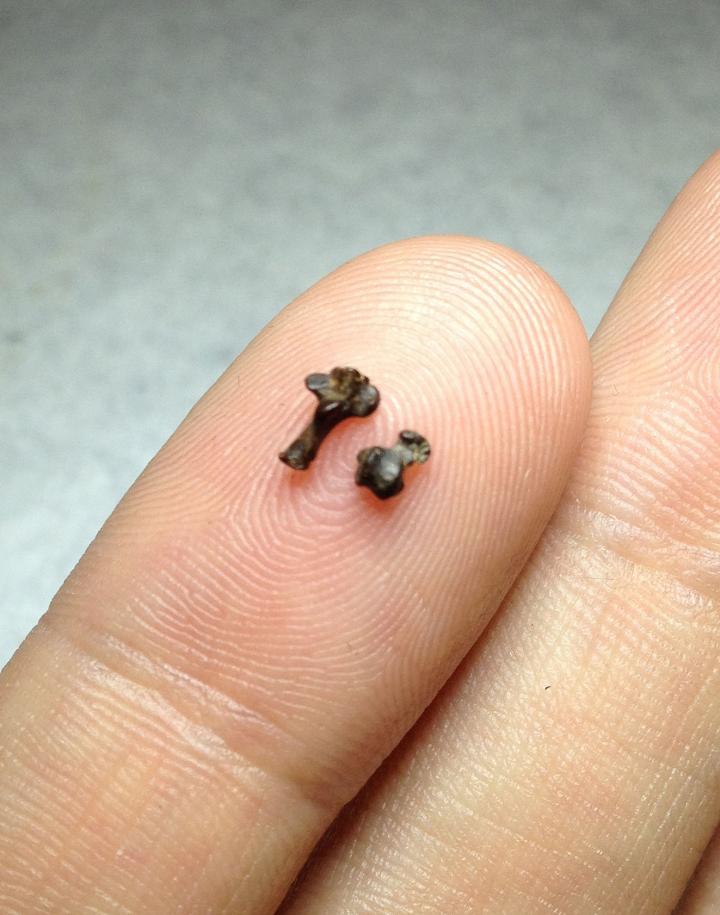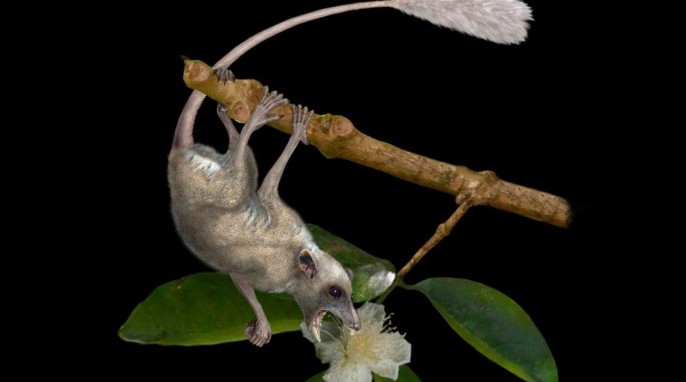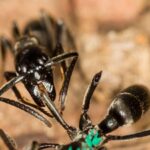Oldest Primates Lived in Trees
By Kate Stone
A new study from the University of Florida suggests that humans’ earliest primate ancestor was a tree-dwelling creature. Named Purgatorius, scientists believe it looked like a cross between a squirrel and tree shrew, and weighed less than a deck of playing cards.


This ancient animal was previously known only by its teeth. The shape of the teeth allowed paleontologists to determine the Purgatorius — estimated to have weighed about 3.5 ounces — ate insects and plants, but researchers knew little else about its lifestyle. With the discovery of the primate’s tiny ankle bones, scientists now have reason to believe it lived in trees.
According to Stephen Chester, assistant professor of anthropology at Brooklyn College, City University of New York, the wide range of mobility in the joints of the ankle bone suggests that tiny Purgatorius spent its time climbing trees and reaching for fruit at the edge of limbs.
“These ankle bones have really unique characteristics that indicate a specific kind of mobility that we only find in primates and their closest relatives today,” Chester explains. “Early primates were using this high degree of mobility to access resources that other animals on the ground couldn’t reach.”
RELATED: ILLEGAL COCOA FARMS THREATEN PRIMATES
The ability to live in trees gave those early primates access to valuable food sources. This is considered to be a critical factor in why primates have been successful in evolution. The adaptations Purgatorius had for climbing support the idea that the earliest primates diversified at the same time flowering plants became widespread.
“While Purgatorius is found just after a dramatic extinction that includes all non-avian dinosaurs, the new fossils suggest that the divergence of primates from other mammals was a more subtle event,” says Jonathan Bloch, curator of vertebrate paleontology at the Florida Museum of Natural History. “The beginning of primate evolution involved small modifications of the skeleton, making it easier to move through trees and eat the fruits, flowers, and leaves that they encountered.”
Bloch and Chester actually found Purgatorius’ ankle bones among boxes full of small, unidentified fossils recovered from the Garbani Channel sites in Montana by paleontologist William Clemens from the University of California, Berkeley. The Garbani Channel area is also famous for producing the holotype specimen of Tyrannosaurus rex.
“This discovery gives us an idea of what the rest of the animal looked like and what it could do,” Clemens says. “The take-home message is that arboreal life evolved early in the history of primates and is shared by most of their descendants.”
“You couldn’t possibly have predicted this animal if you only looked at the types of mammals that are alive today,” Bloch says. “This is something you only find in the fossil record.”
This research study is published in the Proceedings of the National Academy of Sciences.
Illustration courtesy of Doug Boyer




